You don’t need me to tell you who and what Sailor Moon is. Since the publication of the first chapter of Bishoujo Senshi Sailor Moon (known in the Anglosphere as Pretty Guardian Sailor Moon) in December 1991, Naoko Takeuchi’s magnum opus has gripped audiences of all ages. But its following among LGBTQ+ people is perhaps not as well appreciated. Just this month, on a visit to a gay muscle bar, a fellow patron told me he was surprised to see so many people dressed as Sailor Moon characters at a gay rave. Sailor Moon has always spoken to the queer community, and if you’re somehow not convinced, then read on, or I’ll punish you in the name of the moon!
1. Sailor Moon Herself Is Clearly Bisexual
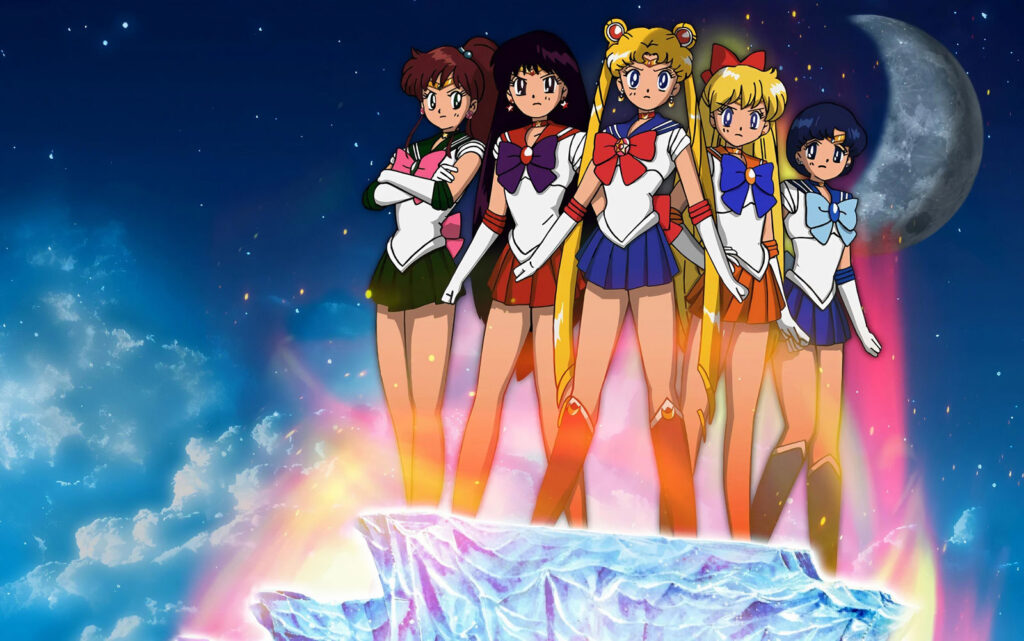
Okay, that might be a little too definitive. After all, protagonist Usagi Tsukino could just as easily be pansexual. Although she has an eternal love with Mamoru Chiba, the rose-throwing Tuxedo Mask and patron saint of Guys Who Stand Around, she has demonstrated an interest in women and potentially other genders on more than one occasion. In the original manga and the Sailor Moon Crystal adaptation, whenever a new woman cast member is introduced, she blushes, clutches her chest and swoons over just how beautiful they are. Every single time. And viewers of the ‘90s anime also noticed how her relationship with Rei Hino took on an almost tsundere quality. But what did I mean by “other” genders? Well…
2. The Sailor Starlights Are More Than A Little Gender Ambiguous
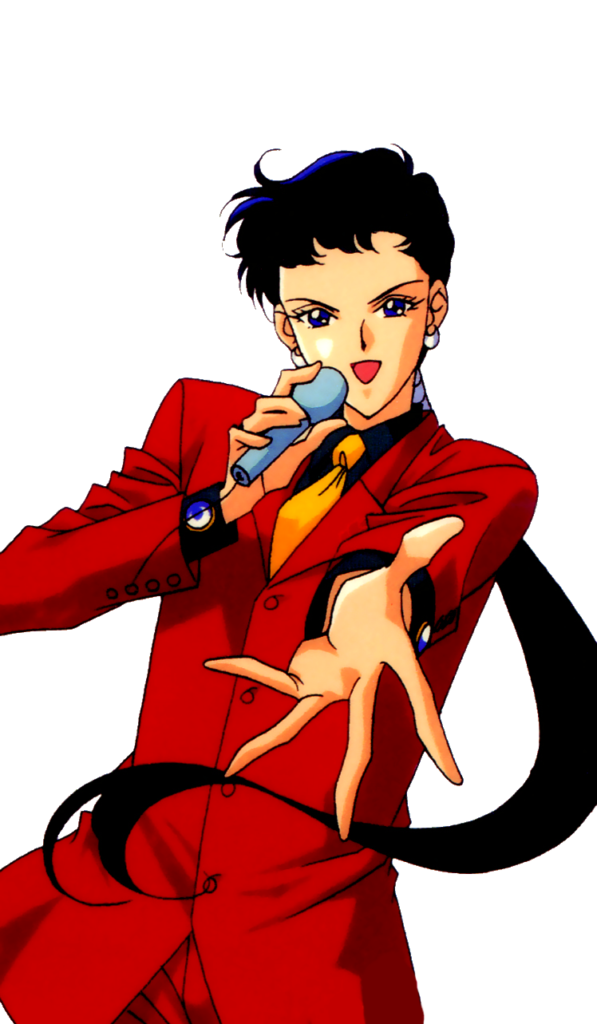
The fifth and final arc of the story, which pits Usagi and the other teammates against Sailor Galaxia, features the introduction of the Sailor Starlights, Guardians from beyond our solar system. On their arrival on Earth, the trio ( Sailor Star Fighter, aka Seiya Kou, Sailor Star Healer, aka Yaten Kou, and Sailor Star Maker, aka Taiki Kou) disguise themselves as men and form the boyband Three Lights. At least, that’s in the manga: in the anime, all there physically change gender during their transformations: they are men when powered down, and women in their Starlight incarnation. Their leader, Seiya, becomes deeply attached to Usagi – and with Mamoru absent, she is more than a little torn by her attraction to Seiya. Even when Seiya’s gender-changing transformation is revealed to the Sailor Guardians, none of them (least of all Usagi) seem to care about it: Seiya is Seiya, first and foremost.
3. Is Sailor Uranus a Lesbian?
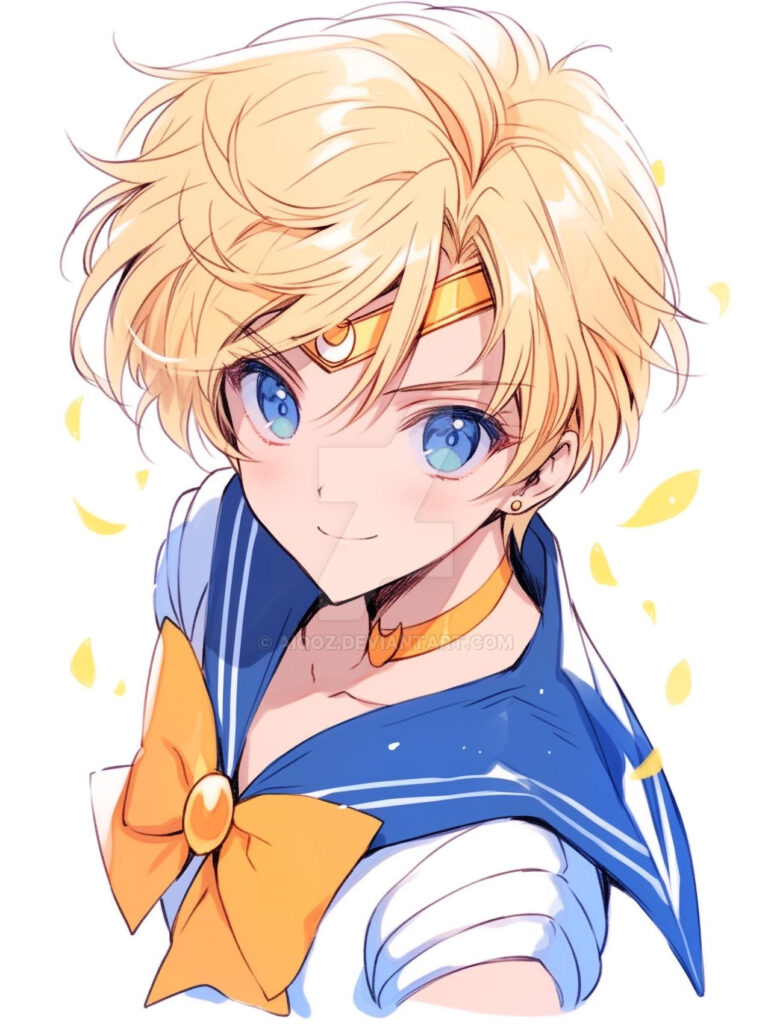
Let’s consider Usagi’s attraction to Sailor Uranus, the secret identity of Haruka Tenou. Introduced as a fairly androgynous character, Usagi and friends initially believe Haruka to be a handsome older boy. But when it is revealed that Haruka isn’t a man… the attraction doesn’t go away. In the ‘90s anime adaptation, Haruka and Usagi’s relationship is given a lot of screen time, and in particular Usagi’s reaction to Haruka’s presence. She gets flustered when Haruka touches her, is eager to dance with Haruka at a ball, and they even have an episode literally chained together as Usagi carefully tends to Haruka’s wounds. And Haruka seems to love encouraging this, too. So why doesn’t Haruka risk it all for Usagi? Because Haruka already has a girlfriend: Michiru, who is also Sailor Neptune. It’s made explicit in the Japanese version of the anime that they are a couple, though the first English dubbing changed their relationship status to “cousins”. Doing with so without editing out the gazing into one another’s eyes and copious hand-holding, though, did make things a little odd. So, it’s settled, right? Haruka is a woman who likes women. Well…
4. Or is Sailor Uranus Beyond Gender?
The manga and the manga-faithful Sailor Moon Crystal, on the other hand, are much more ambiguous on the subject of Haruka’s gender. Haruka is depicted as more masculine in appearance when wearing masculine clothes, and was originally conceived by Takeuchi as being a handsome Prince and best girl friend rolled into one. More, Sailor Neptune describes Haruka as “both male and female. She is a Guardian who possesses the strength of both genders.” Haruka is often depicted as wearing both masculine and feminine clothing, and when Usagi asks straight-out, “are you a man or a woman?”, replies simply: “Is it so important if I’m male or female?”. To a degree, then, Haruka’s identity can be interpreted by the reader any way they like. But their relationship with Michiru is also more than a little unconventional.
5. Sailor Moon has an Explicit Polycule Relationship
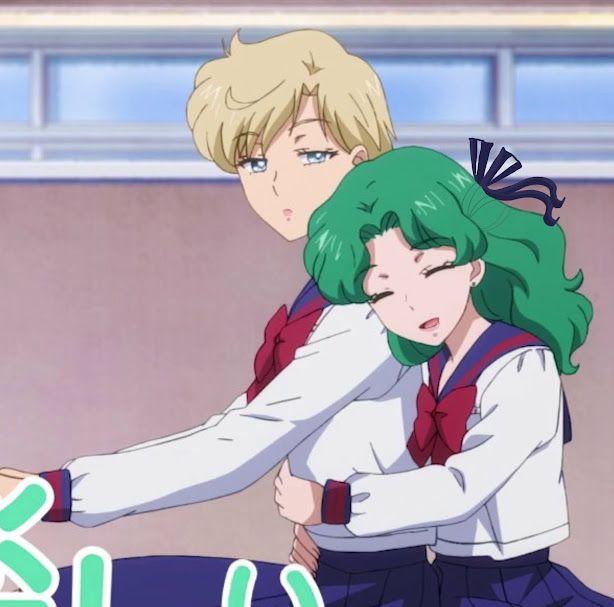
Following the events of the third story arc, Hotaru Tomoe, who transforms into Sailor Saturn, is reborn as an infant after an act of self-sacrifice. Although she is first seen cradled in Sailor Moon’s arms, she is soon adopted by Haruka, Michiru, and the final “outer” Guardian, Sailor Pluto, the alter ego of Setsuna Meioh. Together, these three women raise Hotaru as her three parents, all living together in the same house. But while they have a non-traditional familial structure, how does Sailor Pluto fit into the relationship romantically? Is she a part of Michiru and Haruka’s partnership? Well, probably not…
6. Sailor Pluto Might Be Aroace
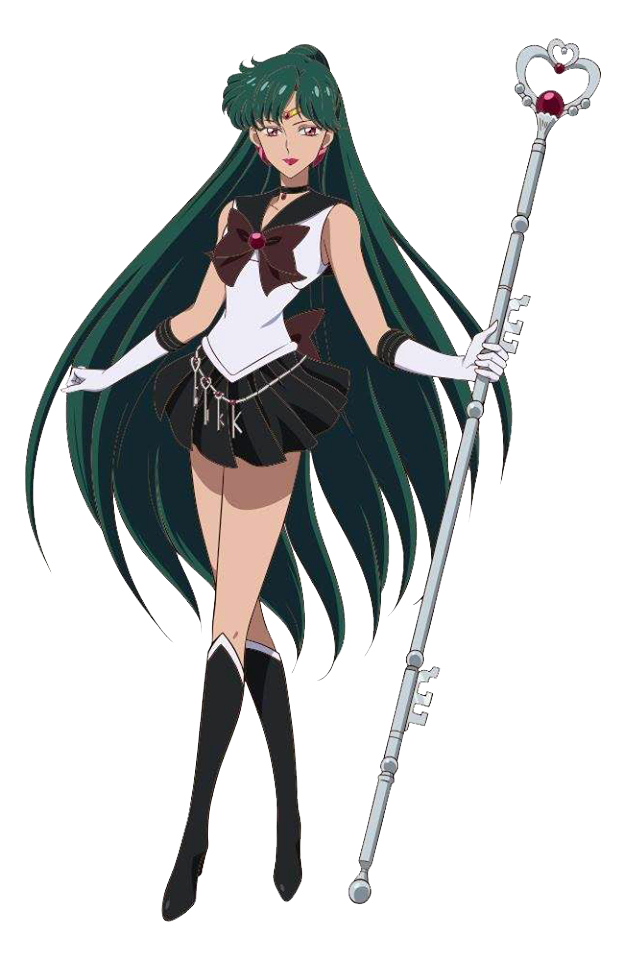
Setsuna is the Sailor Guardian of time, and is the first of the outer Guardians to be introduced. Her duties include guarding the door of space and time to ensure that nobody passes through it. However, when she passes her time on Earth living with Haruka, Michiru, and Hotaru, she is notable for being the only Guardian who does not seem to have any romantic interest: or, indeed, and interest in romance.
The manga and Crystal suggest that she may have a slight crush on Mamoru’s future form, King Endymion, but this is never followed up on in subsequent story arcs, and the ‘90s adaptation omits this detail entirely. She is also described as being a Goddess, and so it wouldn’t be unusual (and certainly none of the other characters think it unusual) for a deity who typically lives outside the space-time continuum to not have any strong feelings or interest in romance or sexuality.
7. Sailor Mercury: Demisexual Icon?
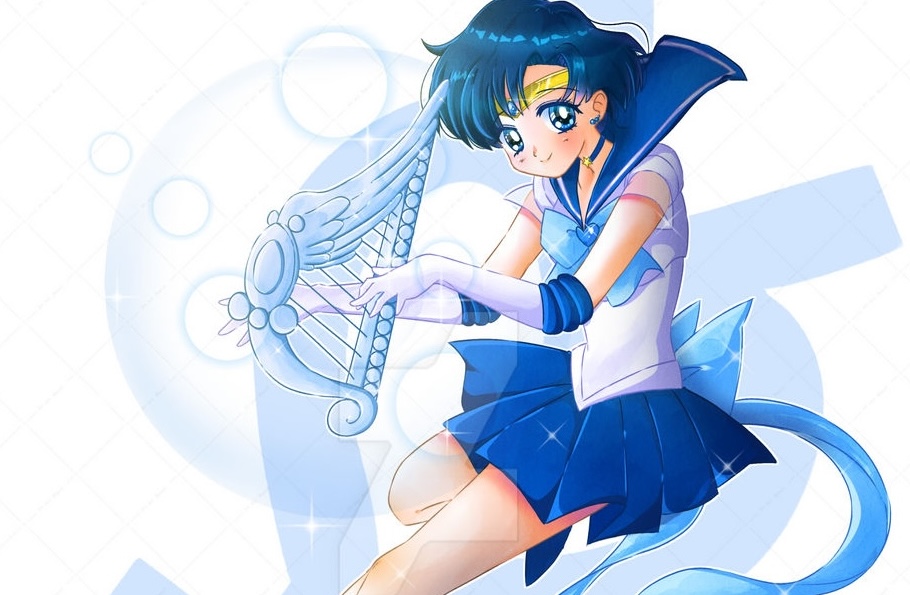
The most popular Sailor Moon character in Japan, Sailor Mercury, known as Ami Mizuno, is also the most intelligent of the main cast, and plainly values understanding people and acting on thoughts rather than feelings – or, at least, letting her feelings be guided by her thoughts. While the inner Guardians regularly gossip about boys and men they think are hot, or girls they think are cute, Ami is often fairly silent on the subject, or even seems irritated that the discussion is about pop stars or classmates when they should be studying. However, when Makoto Kino, the Guardian Sailor Jupiter, goes on a “date” with Haruka, and her friends ask, “has [Makoto] changed her orientation?”, Ami interjects, “that doesn’t matter.”
She does show romantic interest in men, but not just anyone: she hates getting love letters, and doesn’t know how to react to them. However, she briefly dates Ryo Urawa, who is also very intelligent and empathetic, and though she never meets him, she becomes infatuated with test-taking rival Mercurious, the only person who can tie with her intellect. But intelligence isn’t all she is looking for: in a scene that launched a thousand ships, when Ami sees Makoto all alone at a disco, she takes her hand and dances with her.
8. It’s Not Just the Heroes!
Sailor Moon villains are just as likely to be queer as the heroes. And unlike queer-codes villains in Disney films of the 1990s, like Scar from The Lion King, or Ursula of The Little Mermaid, Sailor Moon’s queer villains were often presented as sympathetic and relatable. Zoisite, for example, is the lover of Malachite, another of Queen Beryl’s generals. Further, Fish Eye, a member of the Dead Moon Circus, is presented as a man with an extremely feminine presentation, and in their animal form becomes a lionfish, a species which is capable of changing sex. The series doesn’t mock or belittle its villains for their identity, but instead marks them as villains due to their actions: they’re bad not because of who they are, but what they do – and even then, they are usually given sympathetic motives.
9. The Transformations Are Gay. No Dispute Will Be Tolerated.
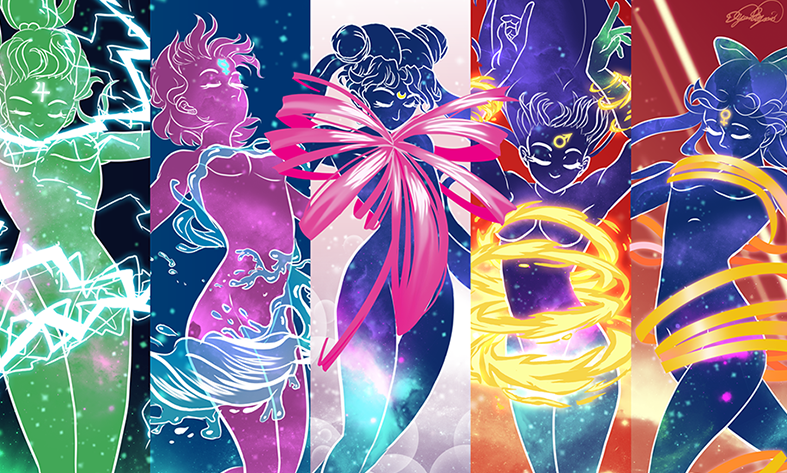
The transformations of the Sailor Guardians are gay as heck. They’re about these people coming into their power by putting on their true face. “Make up!” is the final call of any transformation, and what is make up but a mask that reveals the truth beneath the face? And it would be remiss not to note that the rainbow is everywhere during these transformation sequences. ND Stevenson has cited Sailor Moon’s transformations as an inspiration for their wildly popular and incredibly LGBTQ+ friendly cartoon She-Ra and the Princesses of Power for the henshin moments in that show. And I will not argue with they who gave us Scorpia. Will you? No.
10. The Most Obvious Sign: It Was Censored
When Sailor Moon was localized in the West, as a “girl’s Power Rangers”, it proved its queerness by being heavily censored when it came to any LGBTQ+ content. As mentioned, Haruka and Michiru became cousins. Haruka was always a woman. Zoisite wasn’t an effeminate man, but was a straight woman. And Sailor Moon Stars, the final and, to many, best season of the show, with gender-changing Guardians who flirt with men and women alike? Not translated at all at the time. A Blu-Ray in English was only released a few years ago. Usagi fights evil by moonlight, but the powers that be in the West tried, and failed, to take away the moon.
Sailor Moon Will Always Celebrate Miracle Romance
Naoko Takeuchi and Toei may not have intended to make characters and a show that has been iconic for LGBTQ+ people around the world, but they did anyway. Sailor Moon is interested in diversity and brazenly enthusiastic about acceptance. The lyrics of ‘Moonlight Densetsu’ tell us that the heart is a kaleidoscope, something which, if you want to look through it, can show you all the colors of the world and of others through infinite variations. Maybe, one day, we will all be lucky enough to live in the Moon Kingdom.
